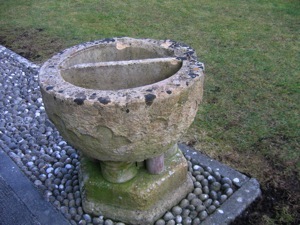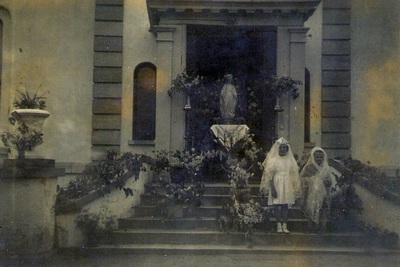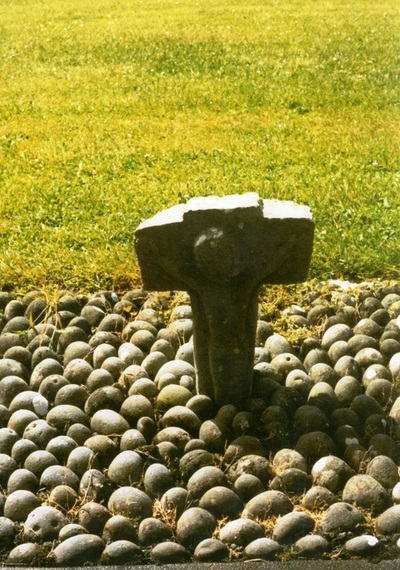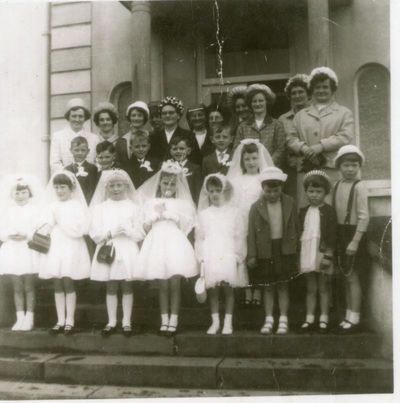Live Camera
Our Church
The Parish of Lackagh as we now know it once consisted of five smaller parishes, each with its own Church.They were Kilskeagh, Grange, Lackagh, Derrymacloughna and Kiltrogue. These churches were all located beside Norman Castles
Derrymacloughna church is situated to the front of the castle.The priest in Derrymacloughna had two Irish acres of land for his use. Kilskeagh Church was also known as the Church of the wooden cross. In Lackagh, the old chapel of St. Columbcille is situated in the grounds of the old cemetery adjacent to the River Clare whilst mass was celebrated in Grange Church up until the middle of the 19th century. The remains of the old church no longer exist in Kiltrogue.
These five small parishes were amalgameted sometime before 1306. From then up until the 16th century, Lackagh Parish was part of the smaller diocese of Annaghdown which subsequently joined to Tuam Archdiocese on a permanent basis from the mid 15th century having been joined with Tuam on and off since 1252.
The intertwining of Political and Religious events in England during the middle of the 15th century impacted on Lackagh in its own way. The struggle between Catholicism and Protestantism saw the Prebendery of Lackagh Parish change from John Moore, the titular Bishop of Annaghdown to a William Lally who was appointed during Elizabeth I's reign. He was later appointed Archbishop of Tuam on her orders because he held on to her preferred form of Protestantism.
Yet despite this strengtheing of Protestant church power, Lackagh remained by and large a Catholic Parish though this was well tested over the course of the next century by way of the Cromwellian campaign and the subsequent land forfitures and settlements in 1661 and the Williamite war (1689-91). A small stone cross is located in the grounds of the current Lackagh Church which attests to the belief of the catholic population of Lackagh at that time.
The Penal Laws were introduced in the aftermath of the Williamite War in order to protect the political dominition of the Anglo-Irish Protestant Ascendency in Ireland. The laws banished members of religious orders and bishops, prohibited there being more than one priest in each Parish whilst new priests could not be ordained nor could new Catholic Churches be built. The laws effectively lasted from 1695 until 1829 and Catholic Emancipation.
Yet, the many mass rocks and mass paths as referred to in the book, "In their own words" are testimony to the failure of these laws and how highly people valued their faith. In 1834, there were 2,347 Roman Catholics in Lackagh with an average weekly attendance at mass of 1,200-1,300. The old chapel of St. Columbcille, in the grounds of Lackagh old cemetery, albeit now in ruins, also serves as a reminder of the enduring nature of the Catholic Church in our parish. Tradition has it that this little church was once thatched but burned down when a man was drying flax on the floor and the church caught fire.
Parishioners subsequently attended mass in the castle just across the River Clare for some time afterwards until a new Chapel was built in Carnoneen in 1838/9. Again, tradition has it that a lot of work was done by local stonemasons including the Fahy's from Lackagh Road. A Plaque on the church grounds commemorates the event:
This is the house of the Lord, firmly built,
it is well founded on a firm rock
Erected by the Exertions of the
Revd Thomas Kearney,
May the Lord bless the Contributors,
A.D. 1838
Over the years Carnoneen Church was upgraded and modified to some extent. Fr. McGeogh extended one of the side aisles sometime between 1853 and 1882 whilst Fr. Heaney added a gallery sometime between 1896 and 1912. Mr. Meldon, the landlord in Coolarne donated a gothic altar. The church was reroofed in 1934 by Moggans of Tuam and celebrated its centenery in 1939 by having a bell erected. By now it was known mainly as Lackagh Church.
The increased industrialisation of Galway in the 1960s brought spinoff benefits to the surrounding hinterlands including Lackagh which saw its population increase gradually. It was therefore decided In the late 1960s that the church should be extended to cater for the increase in mass goers and in late 1972 the project came to fruition at a cost of over €74,000 which made local newspaper headlines.
Coolarne Chapel
In 1927, the Daughters of Charity invited local people to attend mass in the convent and a new chapel was built and dedicated in 1934 as a Chapel of ease for the people of the area.
Derrymacloughna church is situated to the front of the castle.The priest in Derrymacloughna had two Irish acres of land for his use. Kilskeagh Church was also known as the Church of the wooden cross. In Lackagh, the old chapel of St. Columbcille is situated in the grounds of the old cemetery adjacent to the River Clare whilst mass was celebrated in Grange Church up until the middle of the 19th century. The remains of the old church no longer exist in Kiltrogue.
These five small parishes were amalgameted sometime before 1306. From then up until the 16th century, Lackagh Parish was part of the smaller diocese of Annaghdown which subsequently joined to Tuam Archdiocese on a permanent basis from the mid 15th century having been joined with Tuam on and off since 1252.
The intertwining of Political and Religious events in England during the middle of the 15th century impacted on Lackagh in its own way. The struggle between Catholicism and Protestantism saw the Prebendery of Lackagh Parish change from John Moore, the titular Bishop of Annaghdown to a William Lally who was appointed during Elizabeth I's reign. He was later appointed Archbishop of Tuam on her orders because he held on to her preferred form of Protestantism.
Yet despite this strengtheing of Protestant church power, Lackagh remained by and large a Catholic Parish though this was well tested over the course of the next century by way of the Cromwellian campaign and the subsequent land forfitures and settlements in 1661 and the Williamite war (1689-91). A small stone cross is located in the grounds of the current Lackagh Church which attests to the belief of the catholic population of Lackagh at that time.
The Penal Laws were introduced in the aftermath of the Williamite War in order to protect the political dominition of the Anglo-Irish Protestant Ascendency in Ireland. The laws banished members of religious orders and bishops, prohibited there being more than one priest in each Parish whilst new priests could not be ordained nor could new Catholic Churches be built. The laws effectively lasted from 1695 until 1829 and Catholic Emancipation.
Yet, the many mass rocks and mass paths as referred to in the book, "In their own words" are testimony to the failure of these laws and how highly people valued their faith. In 1834, there were 2,347 Roman Catholics in Lackagh with an average weekly attendance at mass of 1,200-1,300. The old chapel of St. Columbcille, in the grounds of Lackagh old cemetery, albeit now in ruins, also serves as a reminder of the enduring nature of the Catholic Church in our parish. Tradition has it that this little church was once thatched but burned down when a man was drying flax on the floor and the church caught fire.
Parishioners subsequently attended mass in the castle just across the River Clare for some time afterwards until a new Chapel was built in Carnoneen in 1838/9. Again, tradition has it that a lot of work was done by local stonemasons including the Fahy's from Lackagh Road. A Plaque on the church grounds commemorates the event:
This is the house of the Lord, firmly built,
it is well founded on a firm rock
Erected by the Exertions of the
Revd Thomas Kearney,
May the Lord bless the Contributors,
A.D. 1838
Over the years Carnoneen Church was upgraded and modified to some extent. Fr. McGeogh extended one of the side aisles sometime between 1853 and 1882 whilst Fr. Heaney added a gallery sometime between 1896 and 1912. Mr. Meldon, the landlord in Coolarne donated a gothic altar. The church was reroofed in 1934 by Moggans of Tuam and celebrated its centenery in 1939 by having a bell erected. By now it was known mainly as Lackagh Church.
The increased industrialisation of Galway in the 1960s brought spinoff benefits to the surrounding hinterlands including Lackagh which saw its population increase gradually. It was therefore decided In the late 1960s that the church should be extended to cater for the increase in mass goers and in late 1972 the project came to fruition at a cost of over €74,000 which made local newspaper headlines.
Coolarne Chapel
In 1927, the Daughters of Charity invited local people to attend mass in the convent and a new chapel was built and dedicated in 1934 as a Chapel of ease for the people of the area.



